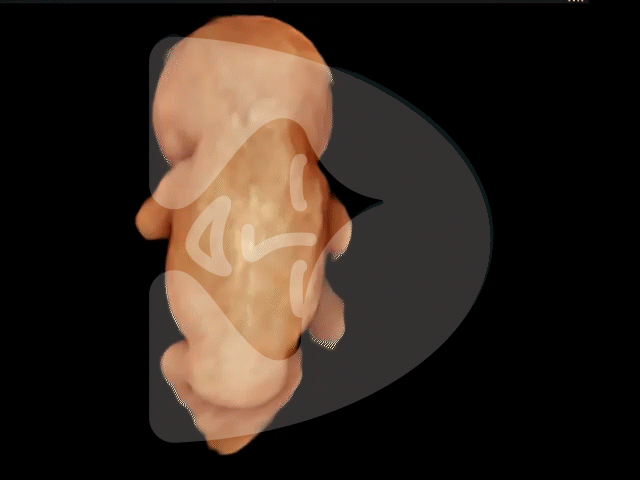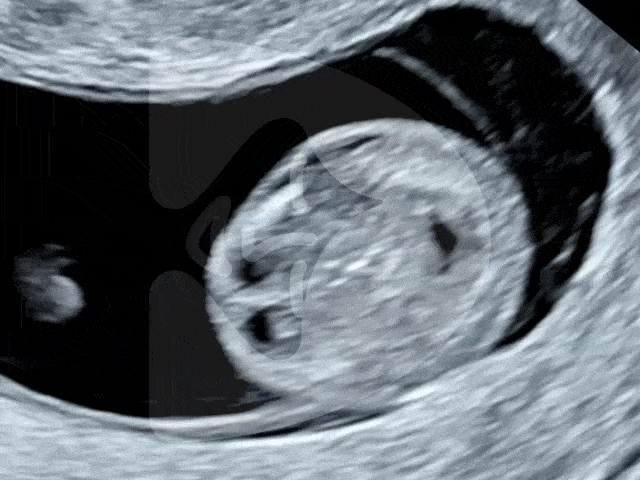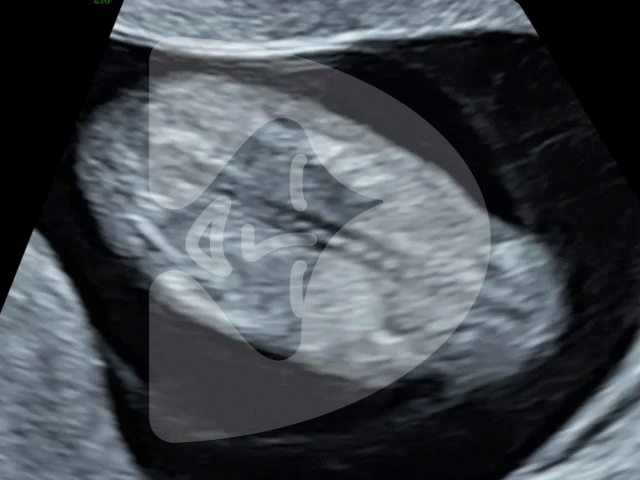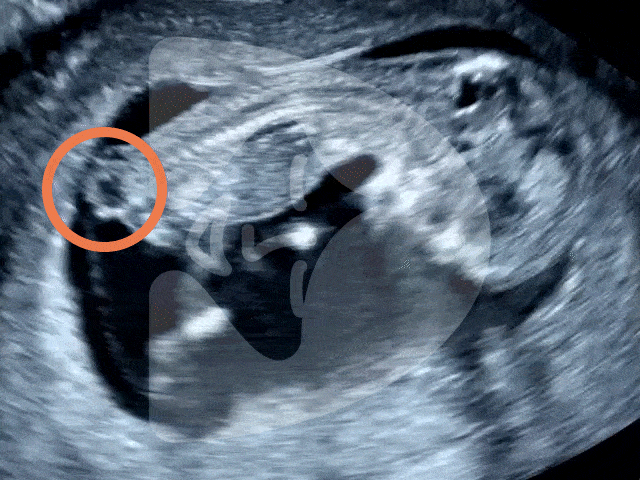Possibility of Early Spina Bifida Diagnosis from 10 Weeks.

Spina Bifida Early Diagnosis from 10 Weeks of Pregnancy

An Interview with Dr. Fred Ushakov
Published
Tags
In honour of UK Spina Bifida Awareness Week, Dr. Ushakov, Founder and Managing Director of London Pregnancy Clinic, discusses the possibilities of early diagnosis of spina bifida. He is an internationally renowned expert in fetal medicine, with a primary focus on fetal spina bifida and is also currently affiliated with FMU UCLH. In recognition of UK Spina Bifida Awareness Week, we have had the privilege of asking Dr. Ushakov several vital questions about spina bifida.
Dr. Ushakov was interviewed by, our Specialist Sonographer in Fetal Medicine, Gynaecology & Fertility, Ms Shaz Khojasteh.
What sparked your interest in spina bifida?
“In 1980, as a young obstetrician heavily involved in attending deliveries and particularly interested in ultrasound technology, I performed a scan on a young pregnant woman. I noticed something unusual about the baby’s brain, although I couldn’t quite discern the exact issue. Subsequently, I was present at her delivery, and to my surprise, the baby was born with spina bifida. This experience was truly shocking. It occurred over 35 years ago during the early stages of ultrasound technology when both knowledge and technology were limited.”
What actions did you take next?
“After that shocking experience, I became genuinely intrigued by effectively detecting spina bifida. I dedicated significant effort to mastering scanning techniques for identifying spina bifida in babies. Over time, I evolved into an expert in this field, with a particular focus on spotting it as early as 10 weeks into the pregnancy. And naturally, I made it a point to share this knowledge with my colleagues, advocating for early spina bifida detection.”
How many babies with spina bifida have you encountered?
“I’ve seen hundreds of fetuses with spina bifida during my career. It’s become a routine part of my work – conducting early scans to detect spina bifida and performing expert scans for babies already diagnosed with this condition. Spina bifida is actually relatively common. In the UK, it’s estimated that around 1 in every 1,000 pregnancies is affected by spina bifida. Even though it might not be as well-known as some other conditions, its effects on those who have it can be quite substantial. This is why early detection and awareness are so important.”
Why is spina bifida so important?
“Open spina bifida holds immense significance due to its prevalence as a major fetal structural defect. It adversely affects essential bodily functions, such as bowel and bladder control. Walking becomes a challenge for most babies born with open spina bifida, and some may also exhibit brain abnormalities. While treatments can enhance outcomes, a complete cure remains elusive. Many babies survive, but their lives are profoundly impacted by long-lasting disabilities. In essence, it’s a severe condition with enduring consequences.”
What do you consider the main issue with spina bifida?
“The primary concern regarding spina bifida, from my perspective, is the alarming lack of awareness. This lack of awareness extends not only to patients but also to primary healthcare providers. From my experience, many pregnant women take folic acid supplements without fully grasping their significance. It’s imperative to raise awareness and educate both the general public and healthcare professionals about this condition, its risk factors, and the crucial role of folic acid supplementation during pregnancy and early first-trimester spina bifida screening. Unlike the widely recognized Down’s syndrome, spina bifida remains relatively obscure. This is a significant concern because, for some babies with spina bifida, the potential outcomes can be even more challenging than those for Down’s syndrome.”
Fred, could you clarify why it’s essential to start taking folic acid immediately upon discovering pregnancy?
“Yes, immediate folic acid supplementation upon discovering pregnancy is of paramount importance. Neural tube formation is an early pregnancy event, usually concluding by the end of the 6th gestational week, approximately 28 days after conception. In babies with spina bifida, the neural tube fails to close correctly, leading to spinal cord and spine bone issues. This anomaly develops extremely early when the baby is less than 1 cm in size and has just initiated its heartbeat.
Folic acid plays a pivotal role during the critical period before and during the first six weeks of pregnancy when the baby’s spine is forming. In practical terms, most people discover their pregnancy around 4 weeks after conception, and by that point, they are already 4 weeks into the pregnancy. This leaves just two weeks during which folic acid can exert its most significant impact. Taking early action is the key to providing essential support for your baby’s neural tube development and minimizing the risk of spina bifida.”
Let’s delve into early Spina Bifida diagnosis during pregnancy. When can you identify this condition?
“With my level of expertise and the use of advanced 3D ultrasound scanners (Fig 1), I can diagnose the majority, probably over 90%, of open spina bifida as early as 10 weeks into the pregnancy. To put it differently, personally missing a diagnosis of spina bifida at that stage would be a great disappointment to me, and I would be highly motivated to conduct a thorough investigation into why such a diagnosis was missed.
-

Fig 1 – 3D ultrasound image of the baby at 10 weeks: All main structures are visible
-
It’s important to note that achieving a 100% accuracy rate in diagnosing spina bifida through ultrasound is a challenge. There can be significant variations in the presentation of spina bifida, and in some rare cases, the anomaly may go undiagnosed until delivery. While early detection is highly valuable, there are instances where the condition’s subtleties make it difficult to diagnose definitively with ultrasound.”
How can you diagnose spina bifida so early? Are you inspecting the baby’s spine?
“No, actually, it’s quite challenging to directly visualize spinal abnormalities at this early stage. What I’m primarily focused on is the fetal head and brain (Fig 2). In cases of open spina bifida, there’s a distinct phenomenon at play. There is a leakage of fluid from the brain through the hole in the spine, and this leakage creates a very specific brain anomaly known as Chiari 2 malformation. I’m essentially searching for the earliest evidence of this phenomenon in the ultrasound images. It’s a highly specific indicator – when this particular brain anomaly is present, it’s a strong indication that the baby has spina bifida.
Certainly, at 10 weeks, I also examine the fetal spine. The spine is not yet ossified, so it appears as dark lines running along the baby’s back, and often I can even discern individual vertebrae as bright dots (Fig 3). This level of detail means that very severe spinal deformities can be visible. Sometimes, spina bifida can manifest as a small bubble on the baby’s back at this early stage (Fig 4).”
-

Fig 2 – Normal brain at 10 weeks: this baby has no spina bifida
-

Fig 3 – Baby’s spine at 10 weeks: no deformities
-

Fig 4 – Baby with spina bifida at 10-11 weeks: spina bifida marked by the circle
Can other professionals detect spina bifida early?
“Yes, there are indeed many research studies indicating the possibility of early detection. One of the most significant research efforts comes from King’s College Hospital in London. Sonographers at this hospital have scanned over 100,000 babies at 11-13 weeks of pregnancy and were able to detect more than half of the fetuses with spina bifida. This achievement is truly impressive, although it’s important to note that it may not be applicable to all NHS trusts. King’s College Hospital has a dedicated unit, established protocols, and a comprehensive training program. Only a handful of other hospitals across the UK, including UCLH that I work for, have similar protocols in place.”
What is the situation like in an average NHS hospital?
“In NHS hospitals, there is a screening ultrasound program called the anomaly scan, which is typically conducted at 19-20 weeks into the pregnancy. During this scan, sonographers check for spina bifida among other anomalies.
Unfortunately, there isn’t a routine first-trimester screening for spina bifida, and the majority of cases are detected during the second trimester. In a 2019 survey of ultrasound units performing scans in the first trimester (11-13 weeks) in England, it was found that only 16% of them included a check of the fetal spine in their protocols.”
Tell us about the “crash sign” and its significance.
“Yes, indeed. Many research groups have proposed various methods for detecting spina bifida in the first trimester. In our case, we’ve come up with a marker that represents the ultrasound appearance of Chiari 2 malformation in the early fetal brain. It’s pretty obvious when you have a top-notch ultrasound scanner.
Now, why ‘CRASH’? We actually have a video up on YouTube that demonstrates it, and once you watch it, the name will make perfect sense.”
Any advice for patients seeking early spina bifida ruling out?
“If you’re keen to know early on, I’d suggest considering booking a 10 Week Scan with a professional having a special interest in this area. For those with previous pregnancies affected by spina bifida, arranging a 10 Week Scan at Fetal Medicine Unit at UCLH with a referral from your primary NHS care provider is an excellent choice. Alternatively, you can book a 10 Week Scan privately at London Pregnancy Clinic. At our clinic, we can combine this scan with non-invasive prenatal testing (NIPT). Please inform our admin staff about your worries, and we will arrange a proper scan for your baby.
If you prefer to stick with NHS services, ask your sonographer during the 11-13 weeks scan if they’re actively screening for spina bifida. Some hospitals in London may have established protocols for this. However, if your NHS provider doesn’t routinely check for spina bifida (which is the case for most hospitals), you might want to consider an early anomaly scan (Early Fetal Scan) at 13-16 weeks through a private provider. For those going the private scan route, it’s a good idea to check if the clinic screens for spina bifida at early stages. Advanced private ultrasound clinics are typically well-equipped, and their staff may have special training in fetal medicine.
Please note that the majority of sonographer-run clinics that provide NIPT or perform non-medical gender scans do not screen for spina bifida.”
It seems like you prefer screening for spina bifida at 10 weeks rather than at the time of the standard NHS scan around 12 weeks. Is that accurate, and could you tell us why?
“Yes, you’ve got it right. In the past, I used to advocate for spina bifida screening during the conventional nuchal translucency scan at around 12-13 weeks. But with the introduction of NIPT, which can be done as early as 10 weeks, I’ve started scanning for spina bifida even before the blood test. At 10 weeks, the little ones are really tiny, measuring less than 1.5 inches (around 35 mm).
Interestingly, with the help of state-of-the-art ultrasound technology (and we’re lucky to use the most advanced machines), many fetal structures are surprisingly easier to examine at 10 weeks compared to 12 weeks. The brain and spine, in particular, stand out as more visible structures.
I won’t bore you with all the technical stuff, but it’s somewhat paradoxical that I feel that an early screening at 10 weeks is actually probably more effective. Plus, it’s a relief for parents who are understandably anxious and want reassurance as soon as possible. But it’s essential to recognize that this type of screening demands a high level of expertise and top-notch ultrasound technology to be done effectively.”
Can other professionals detect spina bifida early?
“Yes, indeed. There are internationally renowned groups in Melbourne, Nice, and Berlin, among others, who also have experience in diagnosing spina bifida before the 11th week of pregnancy. At present, our joined expertise is largely based on anecdotal cases. This is because the incidence of spina bifida is relatively rare, occurring at a rate of 1 in 1,000 pregnancies. To establish statistically significant numbers and determine the detection rate of a 10-week scan, one would need to scan thousands and thousands of babies.”
What is the SMART TEST, and does it include screening for spina bifida?
“The SMART TEST is an innovative concept in prenatal care developed and offered by the London Pregnancy Clinic. It combines extended NIPT with expert ultrasound. The SMART TEST is unique in that it covers a wide range of structural anomalies, chromosomal conditions, and genetic diseases, and it can do so as early as 10 weeks into the pregnancy.
A primary target of the SMART TEST is indeed the earliest possible screening for spina bifida. The test incorporates advanced 2D and 3D ultrasound technology to thoroughly examine the fetal brain and spine at a stage when the baby has just transitioned from an embryo to a fetus. This comprehensive approach ensures early detection and peace of mind for expectant parents.”
Why do you believe that early detection of spina bifida is so crucial? After all, the condition can be diagnosed by the NHS anomaly scan at 20 weeks.
“I’m a strong advocate for early detection of spina bifida, and let me explain why. Spina bifida is a highly serious structural anomaly associated with severe disabilities. While we’ve made significant progress with in-utero surgical treatments, it’s important to understand that these treatments don’t cure the condition.
Moreover, it’s essential to highlight the significance of the surgical aspect. At UCLH, I’m part of the Fetal Surgery for Spina Bifida team, which is led by Professor Jan Deprest, an internationally renowned expert in fetal surgery. Our centre is the sole one in the UK commissioned by the NHS to provide this cutting-edge treatment. In my role, I conduct scans on the baby before and after the surgery. I take great care to evaluate the spinal lesion, perform a thorough examination of the baby’s brain, and perform a comprehensive top-to-toe scan of the entire baby. I’ve had the privilege of scanning hundreds of babies with spina bifida before and after surgery, contributing to their care.
Performing surgery on a baby with spina bifida while they’re still in the mother’s womb is an incredible feat. This complex procedure requires a skilled international team of doctors and medical professionals from the UK and Belgium. The delicate balance of providing life-changing treatment for the baby while ensuring the safety of both the baby and the mother is a remarkable achievement in fetal medicine.
However, almost half of mothers are not eligible for this ground-breaking surgical treatment, often due to the severity of the baby’s condition or additional fetal problems. For these parents, making difficult decisions about the pregnancy becomes a reality, often after 20 weeks. Even for parents eligible for surgery, the journey is challenging. They go through numerous tests, counselling, and procedures in a short time, adding to the stress.
All of this can be alleviated with early diagnosis. Early detection provides parents with the time and information they need to make informed decisions. For the most severe cases of spina bifida that are not operable, early detection helps parents understand their options from the start of the pregnancy. That’s why I advocate for screening for spina bifida as early as 10 weeks or at least at 12 weeks.”
Fred, as a conclusion, what advice or suggestions would you like to offer to future parents?
“If you are in the planning stages of pregnancy, consider starting to take folic acid supplements. Folic acid is most effective when taken before conception and during the first few weeks of pregnancy when the baby’s spine is forming. This simple step can contribute to the healthy development of your baby and reduce the risk of spina bifida.
Additionally, I’d like to emphasize the importance of early screening for spina bifida, which can now be done as early as 10 weeks into the pregnancy. This can provide you with valuable information, peace of mind, and ample time to make informed decisions about your baby’s health. If you have concerns or a history of spina bifida in your family, consider the SMART TEST at the London Pregnancy Clinic. It’s a comprehensive approach that combines NIPT and advanced ultrasound technology to screen for a wide range of conditions, including spina bifida.
Remember that knowledge is power. Being informed and seeking early detection can make a significant difference in the journey of your pregnancy. Stay well-informed, ask questions, and don’t hesitate to seek expert guidance. Your baby’s health is our priority, and we are here to help you every step of the way.”
References


